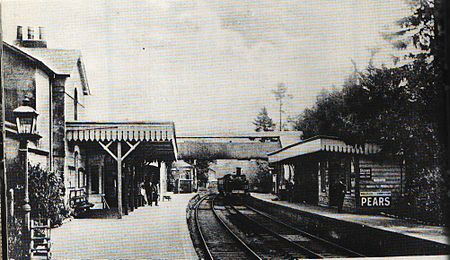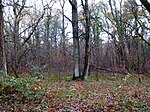The London to Portsmouth canal was a concept for the construction of a secure inland canal route from the British capital of London to the headquarters of the Royal Navy at Portsmouth. It would have allowed craft to move between the two without having to venture into the English Channel and possibly encounter enemy ships. There is no naturally navigable route between the two cities, which resulted in several schemes being suggested. The first, which was put before Parliament in 1641, was for a canal to link the River Wey and the River Arun, whose sources were only 2 miles (3.2 km) apart, but the bill was defeated. Improvements to the River Wey were authorised in 1651, and navigation was extended to Godalming in 1763. During the American War of Independence, goods was conveyed to Godalming by water, and overland from there to Portsmouth, but this ceased when the war ended.
Several other routes for a canal were proposed around the end of the 18th century, as was a railway, but the first to be authorised was the Wey and Arun Junction Canal, which would link the River Wey to the Arun Navigation. It was authorised in 1813 and completed in 1816. This provided a link to the south coast, but the link to Portsmouth was completed by the building of the Portsmouth and Arundel Canal linking the Arun to a ship canal near Chichester. This was authorised in 1817, and included provision for dredging a channel around Thorney and Hayling Islands and construction of another ship canal across Portsea Island. The work was finished in 1823. It was not a success, as there were problems with salt water leaking into farmland and contaminating the water supply for Portsmouth, while it was easier and cheaper to ship goods around the coast once the war with France had ended.
Between 1823 and 1825, three grand schemes for an overland ship canal were proposed, but came to nothing, despite brief interest from the Admiralty. The Portsea Canal was abandoned in 1830, having been hardly used. Trade on the Portsmouth and Arundel and the Wey and Arun canals was much lower than anticipated, and they were abandoned in 1841 and 1871, but the Chichester Canal continued to operate until 1892, when it was given to Chichester Corporation. Parts of it have been restored since 1984, and the Wey and Arun Canal Trust has also succeeded in restoring significant sections of that canal since it was formed in 1970.





